planet
Latest
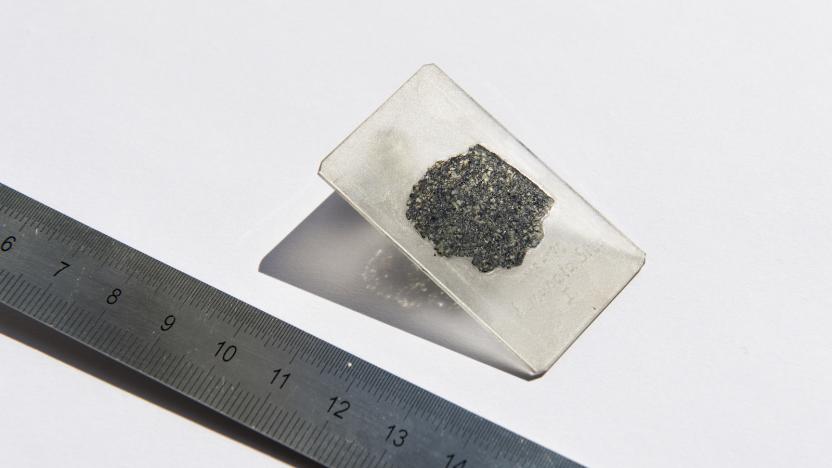
Scientists think these meteorite diamonds formed on a long-lost planet
Scientists studying a meteorite fragment that fell to Earth in 2008 have found evidence that suggests it may have originated from a Mercury-sized planet that no longer exists. The makeup of a meteorite -- the elements it contains, what ratios they're in -- can usually point us to where it came from, like say the moon or Mars. But there are a set of meteorites, including the one collected in 2008, that have no known origin, appearing to be from a planetary body that has since been destroyed and purged from our solar system. "These samples are coming from an era that we don't have any access to," Farhang Nabiei, a researcher on the project, told The Washington Post.
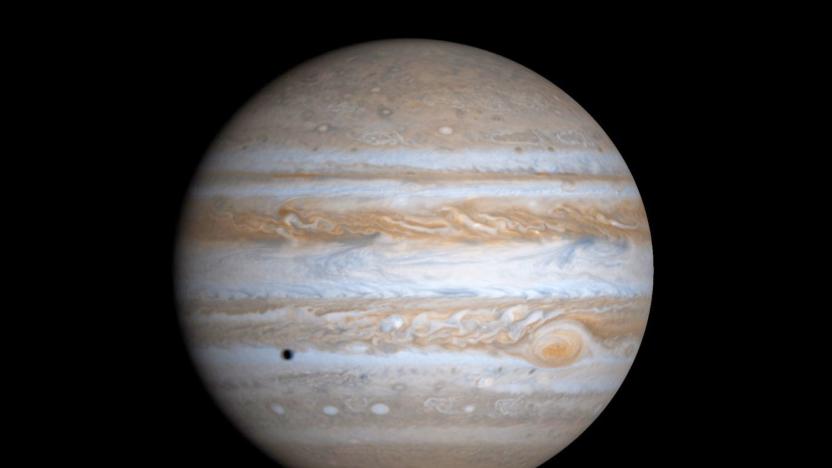
When is a planet too big to be called a planet?
There have been quite a few discussions on what makes a planet (and what doesn't) in the past, the most famous of which resulted in the infamous demotion of Pluto from planet status. But now, there's some rumblings on the upper end of things. This week, Kevin Schlaufman published an article in The Astrophysical Journal proposing the maximum size something can be and still be considered a planet: between four and ten times the mass of Jupiter. Jupiter is, in turn, approximately 317 times as massive as Earth.

Trump's NASA nominee is willing to study climate change... on Mars
Good news: NASA's administrator nominee is fine with studying climate change! Just not Earth's climate change. In answers to a Senate questionnaire, Rep. Jim Bridenstine says it's important to understand why Mars changed so dramatically, losing its magnetic field and oceans to become the barren world it is today. If we know more about the Red Planet, he argues, we could "inform our understanding of Earth." There's a degree of truth to this, but history and Bridenstine's actions suggest it could be about diverting attention away from climate change issues on our homeworld.

Mars rover's home crater was a potential hotbed for life
NASA landed the Curiosity rover in Mars' Gale Crater precisely because it promised to be a sort of open book that revealed a lot about the planet's history. Well, scientists have been busy reading... and it looks like the crater had an intriguing past. Two newly published research papers indicate that Gale was a warm lake for for a period of about 700 million years, ending about 3.1 billion years ago. In other words, it was habitable for a very long time. Even then, groundwater persisted for a long time afterwards.

Most habitable planets may be completely covered in water
When you imagine what a rocky, habitable planet looks like, it's easy to picture an alternate Earth where land and oceans exist in an ideal balance. Unfortunately, that's not necessarily how it will pan out in real life... in fact, you might be surprised if there's land at all. University of Barcelona researcher Fergus Simpson has published a study suggesting that most planets with any significant amount of water are likely to be completely (or almost completely) submerged in it. He ran computer simulations accounting for numerous factors in a planet (such as the deep water cycle and erosion), and most with substantial water levels had an above-water land mass of less than 10 percent -- well below Earth's 29 percent.
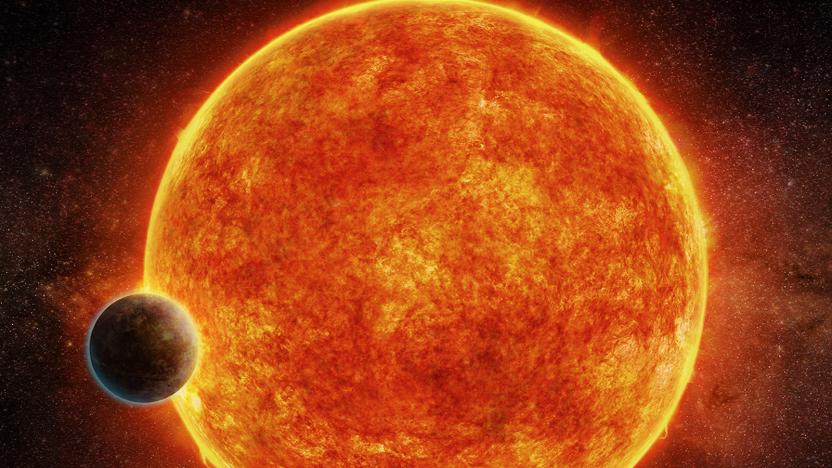
Nearby 'super-Earth' may be our best shot yet at finding alien life
Scientists are finding potentially life-bearing planets at a surprisingly high rate, but the latest may be more tantalizing than most. A research team has discovered LHS 1140b, a temperate rocky exoplanet orbiting the habitable zone of a tiny star 40 light years away. While it's not the first such planet found relatively nearby, it's an ideal candidate for study -- since it transits in front of its host, astronomers could look for water and oxygen in the planet's atmosphere by watching how it filters starlight. The star itself also doesn't emit much high-energy radiation, so there's a greater chance of life than you might see around stars like TRAPPIST-1.

NASA offers first look at planet-rich Trappist-1 star system
NASA was quick to offer conceptual images of Trappist-1 and its abundance of Earth-sized planets. But what does the star system look like, really? At last, now we know... sort of. As part of a raw data release, NASA has offered a simple, 11-by-11 pixel animation that shows the dwarf star as it was on February 22nd. Technically, you're looking at a target pixel file that represents the light levels the Kepler space telescope caught while studying Trappist-1 for an hour. You won't see planets, unfortunately -- an Earth-like planet would barely make a blip in the brightness levels, even if it crossed directly in front of the star.

Visit NASA's newly discovered planets in 'Elite: Dangerous'
Sadly, it's unlikely that you'll ever visit the Trappist-1 system's newly-discovered Earth-sized planets in your lifetime... not unless someone develops near-light speed travel, anyway. However, you'll at least have the option of a virtual tour. Frontier Developments is promising Ars Technica that the second Elite: Dangerous version 2.3 beta will let you visit Trappist-1 and its seven worlds. The developers are really just modifying an existing system in a similar location (Core Sys Sector XU-P a5-0), but that still means that you'll get a rough sense of what it would be like. You'll get to land on at least some of them, two of which will be Earth-like.

NASA is crowdsourcing the search for exoplanets
To those of you who dream of going to space: Sorry, but that may never happen. However, NASA is once again counting on the public for help understanding what's beyond our world. All we have to do is look at some photos online. Today marks the launch of Backyard Worlds: Planet 9, a project that relies on everyday people to help scientists identify objects near our solar system. These celestial bodies appear to move across the sky, but computers have a hard time finding things like brown dwarfs and planets in the noisy images. This means manually searching the photos is the most effective method to get the job done.

Planet acquires Google's Terra Bella satellite imaging division
Google's has officially sold off it's satellite imaging division. An announcement from rival imaging company Planet confirms it will acquire Terra Bella from Google and take over operation of its seven high-resolution SkySat satellites. Once the deal closes, Google will start purchasing images for Google Earth and other products directly from Planet.
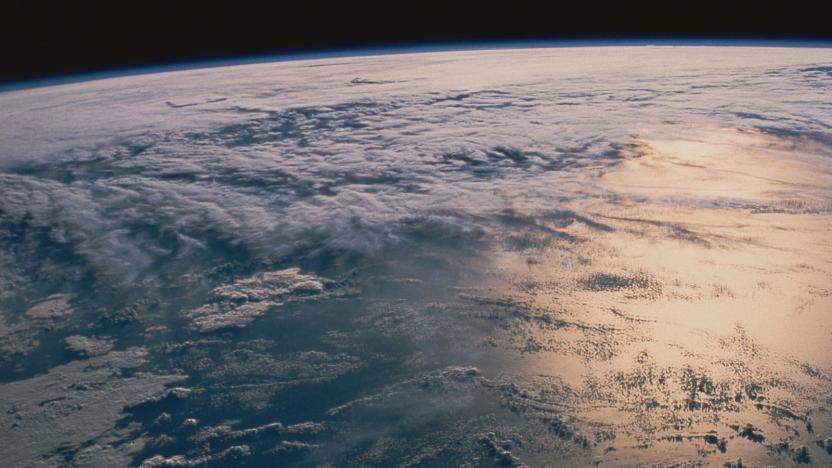
Google may sell off its satellite imaging division
Wall Street has been pushing Google to behave more like a regular company, hacking and slashing at its longer-term projects and R&D divisions. Now, Alphabet CFO Ruth Porat has her sword pointed at the search engine's satellite imaging unit, Terra Bella. According to both the Wall Street Journal and Bloomberg, Google will sell the division to a competitor, Planet, and buy mapping data from other companies in future.

ICYMI: Charging lights with foot power
try{document.getElementById("aol-cms-player-1").style.display="none";}catch(e){}Today on In Case You Missed It: EnGoPlanet is testing streetlights powered by both kinetic footpads and solar panels, placed in a plaza in Las Vegas. Meanwhile, the Panther is a military-style drone that can both drive on the ground and fly through the air, while carrying up to 15 pounds of gear. The guys and girls of Engadget video are stoked about the Beauty and the Beast live-action movie reboot from Disney; the new trailer is here just fyi. The determined garbage kid is here and the AP video of stranded cows is here. As always, please share any interesting tech or science videos you find by using the #ICYMI hashtag on Twitter for mskerryd.
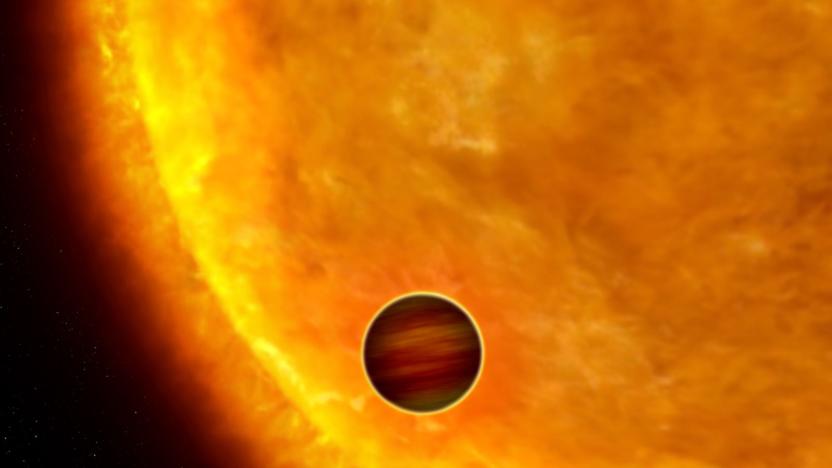
Scientists can directly observe alien planets with a new tool
Astronomers usually have to study exoplanets through roundabout ways, such as watching for the decrease in light when a planet crosses in front of a star. However, they'll soon have a reliable way to observe those alien worlds directly. A Princeton-led research team has successfully tested CHARIS, a supercooled spectrograph instrument that isolates reflected light from large planets (bigger than Jupiter) to reveal their age, mass and temperature. The key is its use of a coronagraph that separates planetary light from the host star's rays -- effectively, it's making sure the needle stands out from the haystack.
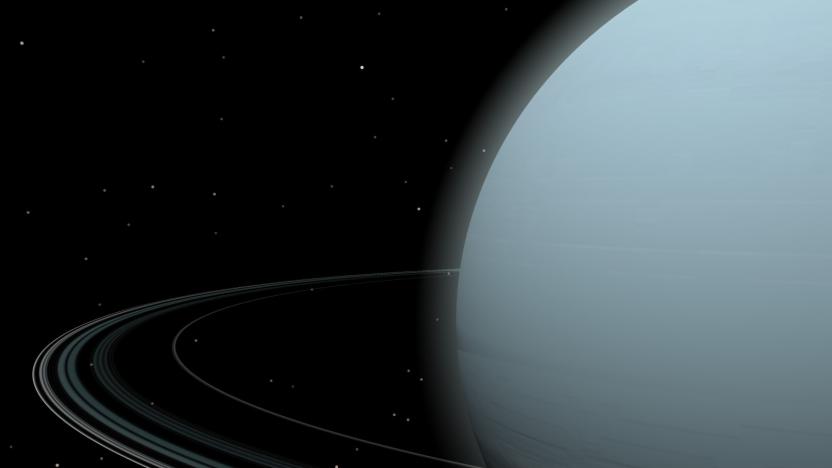
Uranus might have two more moons
NASA launched its two Voyager probes almost 40 years ago, sending the first on a more direct route out of the solar system. Voyager 2 took a longer route to survey Neptune and Uranus in 1986, becoming the first and only spacecraft to fly by the ice giants. Scientists continue to comb over that data, and they might have just made a discovery from the 30-year-old recordings: Two additional moons orbiting Uranus, bringing its total to 29.

White House initiative pushes for more tiny satellites
Miniature satellites are increasingly a big deal, and for good reasons: they're not only less expensive and easier to deploy than the giant satellites of old, but can cover wider areas. And the White House wants to give them a helping hand. It's launching an initiative that will foster small satellites with the resources they need to flourish. To start, NASA is not only proposing as much as $30 million toward purchasing data from these tiny vessels, but creating a Small Spacecraft Virtual Institute that will offer know-how to organizations. A more direct effort has the National Geospatial-Intelligence Agency awarding Planet a $20 million contract for a fleet of small satellites that can capture images of "at least" 85 percent of the planet every 15 days.
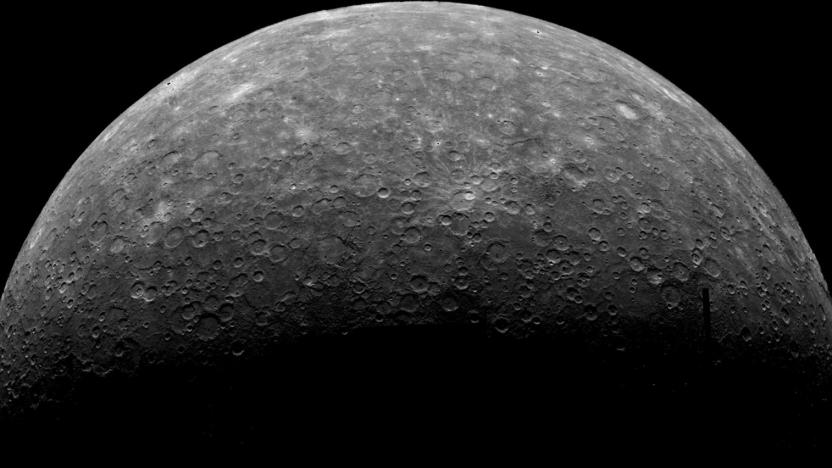
Mercury is the first planet after Earth with tectonic activity
To date, Earth has been the only planet in the Solar System known to demonstrate tectonic activity. Other planets are geologically active, but not much more than that. However, it now looks like our homeworld isn't alone. Smithsonian researchers combing through high-resolution images from NASA's Messenger spacecraft have determined that Mercury is still tectonically active. The team spotted many relatively young fault scarps (surface offsets), which are strong indicators that the minuscule planet's crust is still shrinking as the core cools down. As Gizmodo notes, common wisdom previously dictated that Mercury's interior would have settled down billions of years ago.

Juno probe makes the closest-ever encounter with Jupiter
If you thought the Juno probe's first photos of Jupiter were tantalizing, you're in for a treat. The spacecraft just completed the closest approach it will take during its primary mission around the gas giant, passing a mere 2,600 miles above the surface early on the 26th. It's the closest any vehicle has been to Jupiter, and NASA researchers already believe that they'll discover new things about the Jovian world once they process the data (which could take "some time," NASA warns). And of course, it's a prime photographic opportunity. You'll not only get the sharpest-ever photos of Jupiter's atmosphere when photos arrive late next week, but the first good look at the planet's poles.

Close-by exoplanet may have an oxygen-rich atmosphere
At last, scientists might have spotted a rocky exoplanet with an oxygen-heavy atmosphwere... only it's not the alternate Earth you might be hoping for. Astronomers have determined that GJ 1132b (aka Gliese 1132b), a relatively close 39 light years away, stands a real chance of having oxygen-rich skies. However, it's also scorching hot at 450F (232C). With that kind of heat, any water vapor would have a greenhouse effect -- the atmosphere would cook the surface (turning it into a magma ocean) and eliminate any hope of life.

Mars' veins were created by vanishing ancient lakes
Scientists just produced stronger evidence that Mars once had water lakes that might have nurtured life. After combing over Curiosity rover data, the researchers determined that veins in places like the planet's Gale Crater were likely created by evaporating lakes whose sediments were buried, heated and corroded. The discoveries also suggest that the water in these areas would have been habitable, if not exactly pleasant to drink -- it would have had about 20 times more sodium and sulphate than your bottled water back on Earth. There were likely "multiple generations" of water, NASA adds.
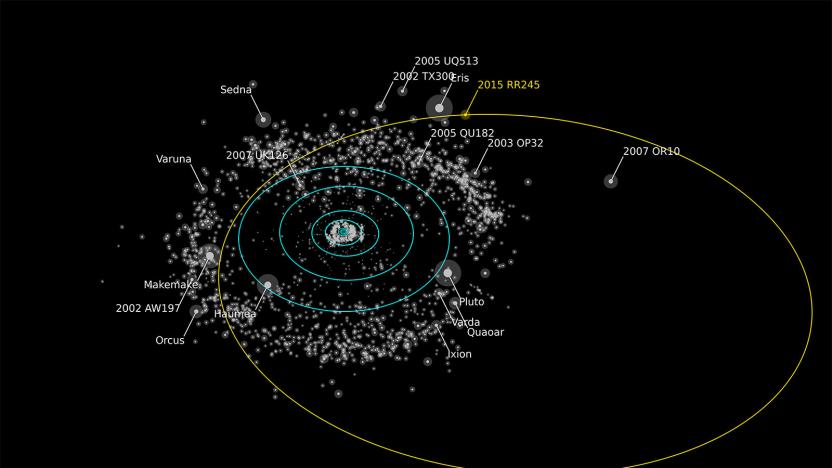
Hawaiian telescope spots a new dwarf planet beyond Neptune
Just beyond Neptune lies a ring of small, icy worlds that offer insight into the formation of our Solar System, and scientists using the Canada-France-Hawaii Telescope on Maunakea, Hawaii, just discovered a new dwarf planet in this region that rivals Pluto and Eris in visibility. It's called RR245 and in this case, size matters -- many of the worlds in the farthest reaches of the Solar System are too small and dull for Earthbound scientists to study. Basically, when it comes to post-Neptune dwarf planets, the bigger and brighter, the better.







